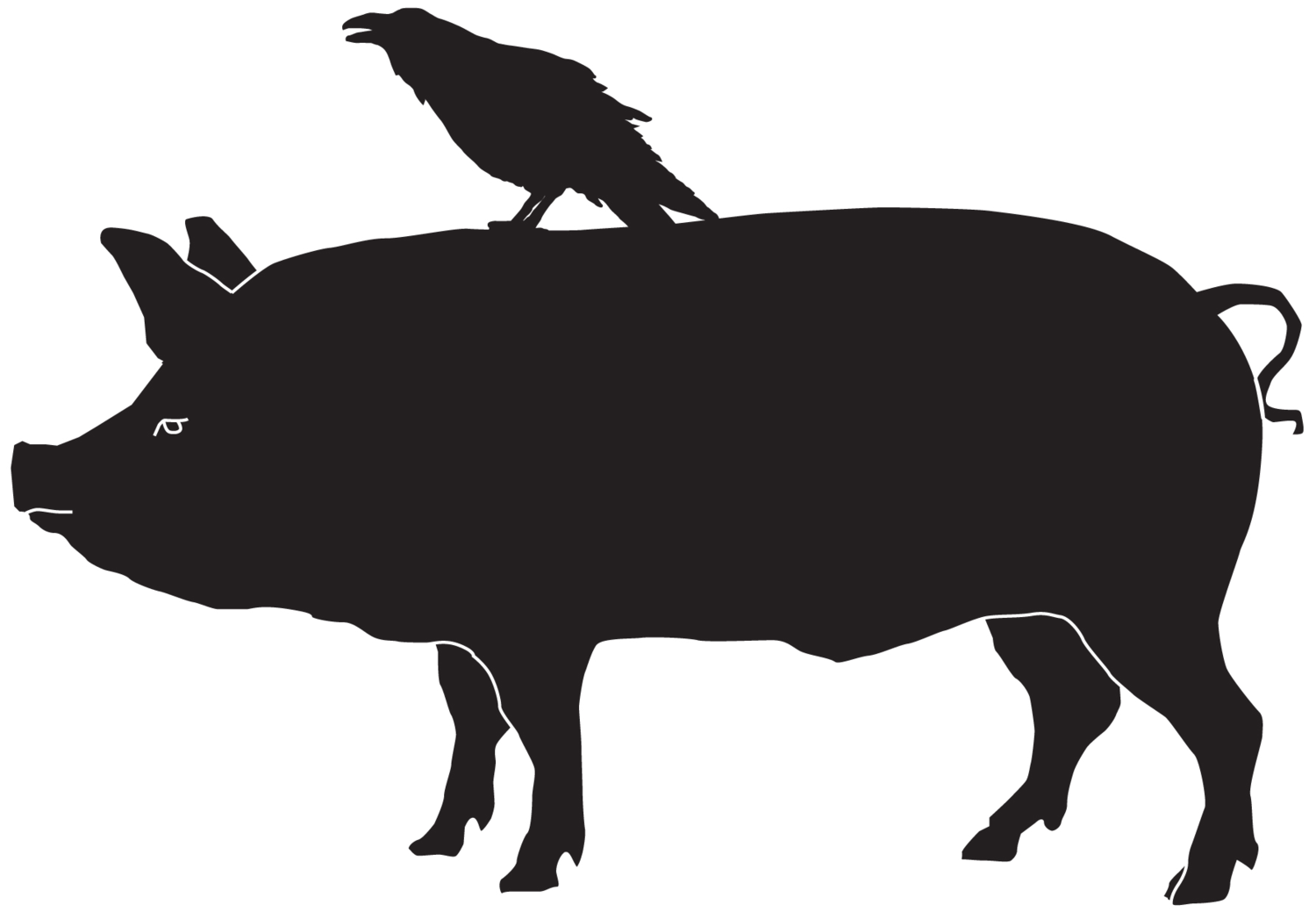THE HISTORY OF HERITAGE BREED PIGS
Pigs were traditionally raised with little direct management, allowed to forage for their own food, fed by-products from dairies, bakeries, and breweries, and used to glean fields after harvest. Pigs' ability to utilize spoiled food and other waste made them a valuable sanitation service even in urban settings. Under such "extensive" husbandry, pigs could be used to produce meat with little investment in feed, time, or labor. Today, most pigs in North America are kept in large, climate-controlled buildings and fed high-energy grains that have been grown and transported specifically as animal feed. The evolution of pig husbandry has affected the number and type of pig breeds that were raised.
Pigs were first brought to the Americas by Columbus in 1493, DeSoto in 1539, and other early explorers. As colonies were established, pigs were imported from England, Spain, Portugal, and other countriesÈ The types of pigs imported were not well documented until after about 1800, when a multitude of breed names began to appear in the historical record. The most important were three imported breeds - the Berkshire, the Big China, and the Irish Grazier - which were widely used as improvers of common stocks. Pigs were an essential part of every farm, being used for home production of lard and pork. They could also be driven to market to generate ready income. Every region seemed to have its own breed of pigs, selected from available stocks to fit the specific climate, uses, and markets. For most of the 1800s, decentralization of breeds and breeding was characteristic of pig production, and this served to maintain a broad genetic foundation for the future.
As the larger settled farms of the Midwest began to produce excess corn, the availability and low cost of this feed attracted pig production and processing to the region. By the mid-1800s, the states that produced the most corn also produced the most pigs, and production declined in the East and New England. The industry was becoming geographically centralized as well and the number of breeds of pigs began to decline. Several breeds became extinct by the early 1900s.
Pig breeds were traditionally classified as one of two types, lard or bacon. Lard breeds were used to produce lard, a cooking fat and mechanical lubricant. These pigs were compact and thick, with short legs and deep bodies. They fattened quickly on corn, and their meat had large amounts of fat in it. This was considered desirable for improved taste and keeping qualities of the pork. In contrast bacon pigs were long, lean, and muscular. They were traditionally fed on legumes, small grains, turnips, and dairy byproducts, feeds which are high in protein and low in energy. As a result, bacon pigs grew more slowly and put on more muscle than fat. Almost all American pig breeds were considered lard types, with only the Yorkshire and the Tamworth classified as bacon breeds.
The market for lard was very strong during World War II, when it was used in the manufacture of explosives. With most lard diverted for military purposes, people had to switch to vegetable oils for cooking. After the war, these oils were successfully marketed as healthier fats, and lard never regained its place in the diet. About the same time, petrochemicals and synthetic nitroglycerine replaced lard for industrial and military purposes. With the decline in the market for lard, demand for lard pigs collapsed. This sudden market shift caused selection of the lard pig breeds to change completely. Breeders needed to produce leaner meat, and they began to select pigs for muscling, rather than fattening, when fed corn. The most popular breeds of the time, including the Berkshire, Duroc, Hampshire, Poland China, and Yorkshire, received most of the industry's attention. These breeds were widespread, and they had the genetic diversity necessary for selection to change direction. The less popular lard breeds were ignored, and most of them disappeared. Only three breeds of traditional lard type remain today, the Choctaw, Guinea Hog, and Mulefoot.
The economic structure of pig production has also changed dramatically since World War II. Pigs used to be an integral part of subsistence and diversified commercial farming, and every farmer kept a few pigs. In contrast, production today is dominated by a few large corporations which are vertically integrated, controlling every step from selection of breeding stock to marketing pork in the supermarket. The number of pig farms has declined precipitously; some farmers have become contract growers for the corporations and others have gone out of business. Fewer and fewer sale barns and processing facilities are open to independent pig farmers.
This economic centralization has led to genetic narrowing as well. Today, the pork industry rests on a three-way cross between a few highly selected strains of the Duroc, Hampshire, and Yorkshire breeds which have been chosen for performance under intensive husbandry. The seven other commercial breeds that remain, including the Berkshire and Poland China, have declined in economic importance, and a handful of critically rare breeds barely cling to survival. It is ironic that an industry whose success was built on a foundation of genetic diversity is rapidly discarding most of its remaining genetic material. Rare breeds of pigs will not be conserved by the pork industry, since these breeds do not have the characteristics desired for today's intensive production of pork. Instead, survival of rare breeds depends upon their use in traditional production niches, such as on pasture and in woodlands, where their hardiness and efficiency have economic value. The market for sustainably produced pork is very small, but it is increasing. In addition, diversified commercial farmers are once again becoming interested in using pigs in conjunction with land clearing, field crops, specialty vegetables, dairying, fruit production, and other agricultural enterprises. This may also provide habitat for rare breeds.
Excerpted from A Rare Breeds Album of American Livestock, pg 71-73.
http://albc-usa.org/cpl/pigs.html

